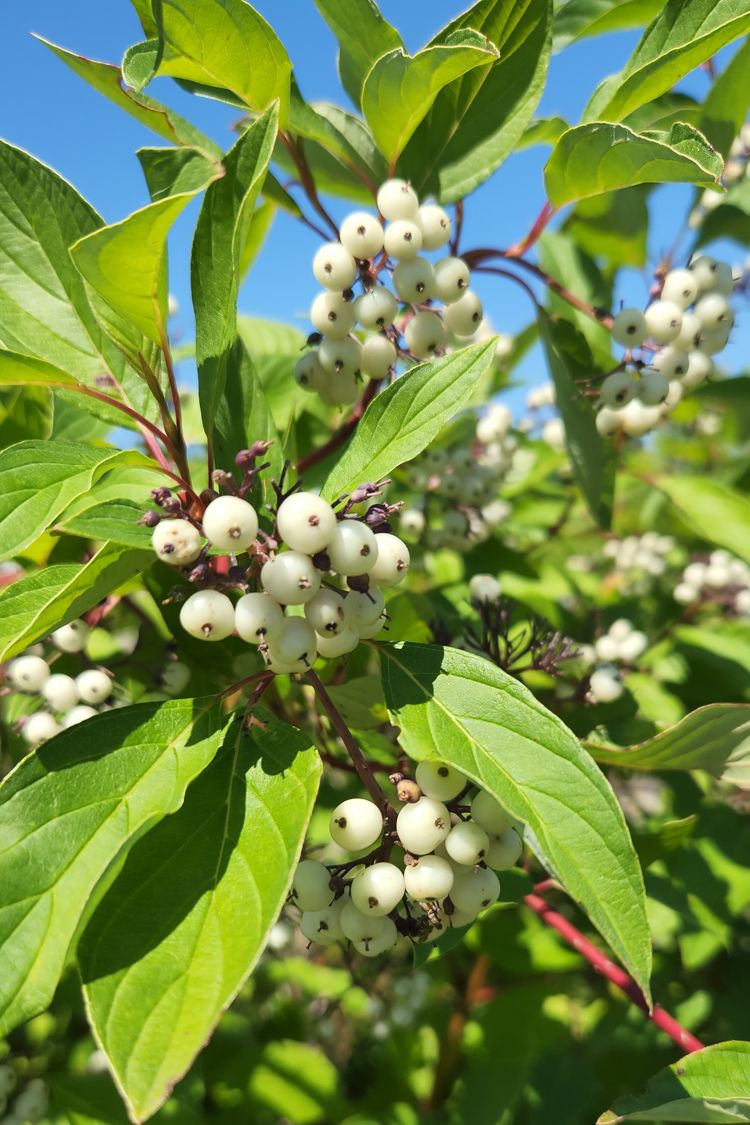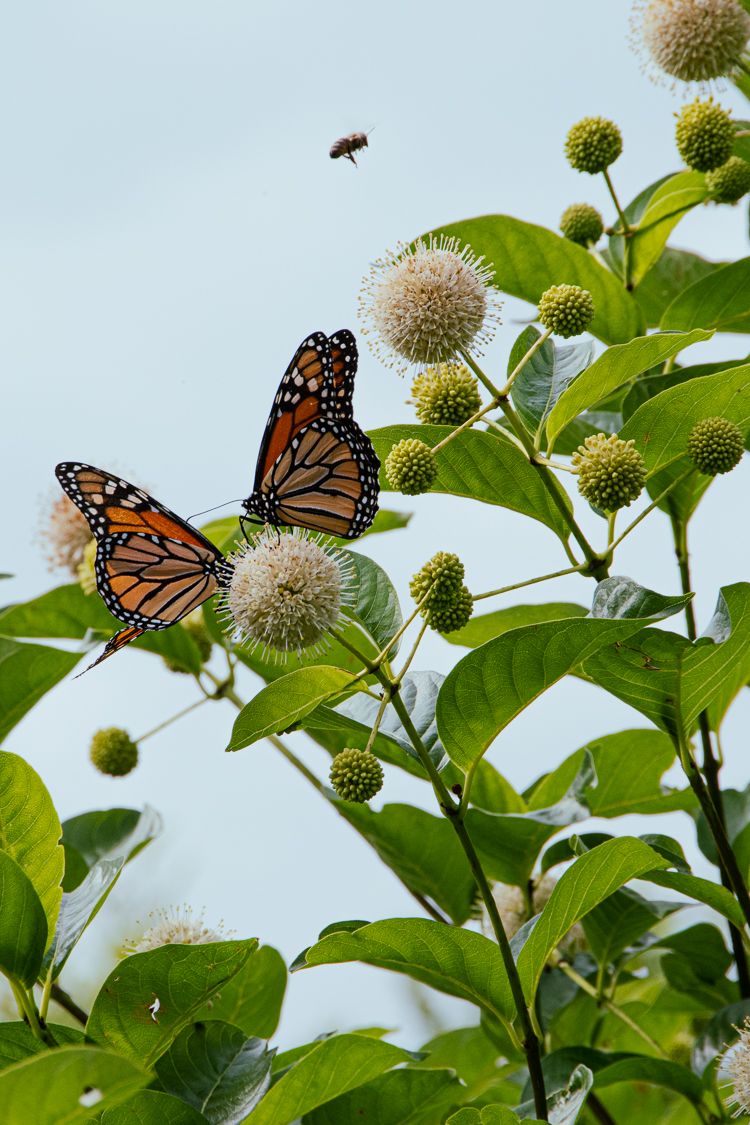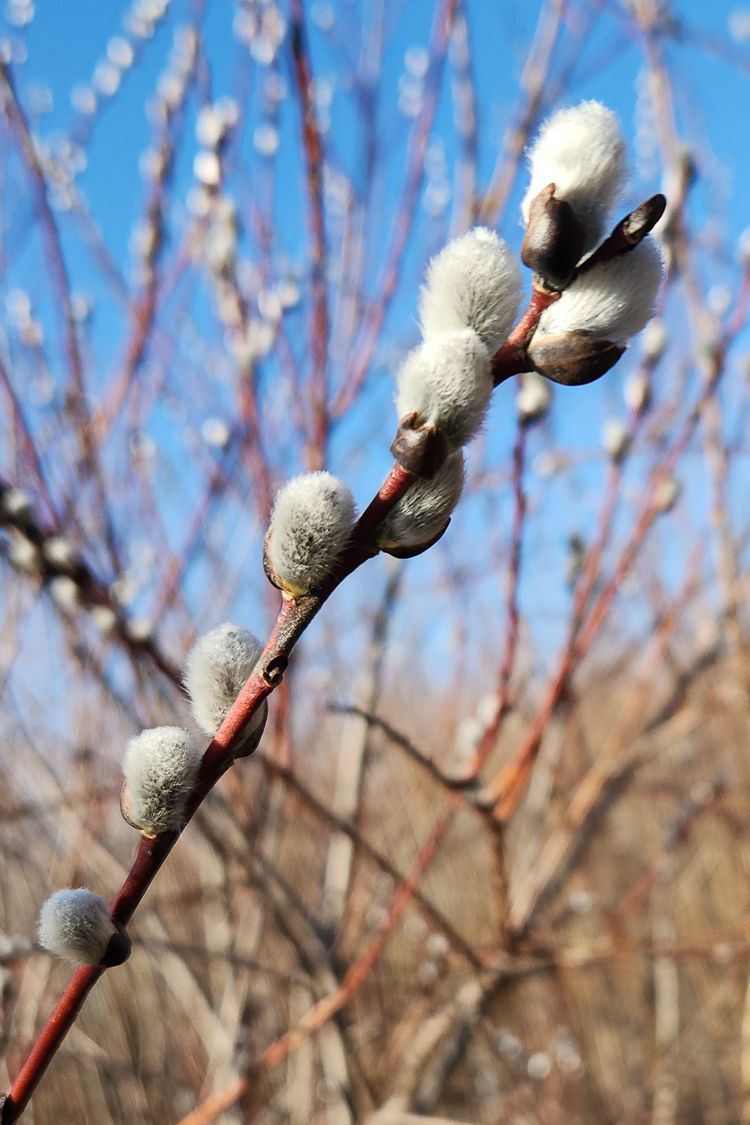Common Elderberry
Elderberry is covered with large umbels of clustered white flowers from June to July, followed by a profusion of dark purple berry clusters in late summer. The fruit is prized by birds and makers of wine and jellies, alike …
| Soil Type | Clay, Loam, Sand |
|---|---|
| Soil Moisture | Medium, Moist |
| Sun Exposure | Full Sun, Partial |
| Height | 6' - 8' |
| Bloom Color | White |
| Bloom Time | May, July |
| Spacing | 8' |
| Zones | 3, 4, 5, 6, 7 |
| Root Type | Rhizome |
| Benefits | Birds, Pollinators, Host Plant |
Elderberry is covered with large umbels of clustered white flowers from June to July, followed by a profusion of dark purple berry clusters in late summer. The fruit is prized by birds and makers of wine and jellies, alike. Feather-like compound leaves grace this shrub, and provide outstanding cover and nesting sites for songbirds. It is also a host plant for numerous species of small moths – another reason nesting birds love this shrub.
Native to eastern North America, Elderberry is at home on streambanks or ponds, and is often seen along rural roadsides. While it prefers moist areas, it is quite tolerant of a wide range of soils in full to partial sun.
Typically growing up to 10 feet tall Elderberry spreads to form a thicket, and for this reason is often planted in settings where it can naturalize and spread a little. In a maintained landscape the suckers can be pruned to control spreading.








